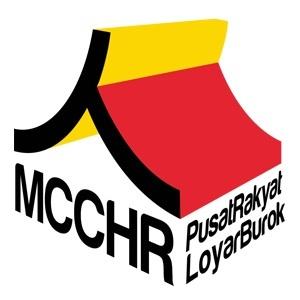The UndiMsia! civic education project in the indigenous peoples community (in Hulu Langat) and urban youth has been on-going for a little more than two years. Thus far, the experience has been enriching for the Malaysian Centre for Constitutionalism and Human Rights (MCCHR). However, here are some lessons learned that can help improve MCCHR’s future projects. (At this juncture, it should be noted that an external evaluation of the UndiMsia! project is pending.)
PARTICIPATION OF INDIGENOUS PEOPLES
1. When the MCCHR started out its activities in the indigenous communities in Sungai Gabai and Genting Peres villages in Hulu Langat (“the Villages”), the turnout by villages were poor and discouraging. For example, in one of the first workshops organised by the MCCHR in Sungai Gabai village, it took about four hours for the MCCHR to coax the villagers to attend the said workshop.
2. It was only after four months of regular visits (twice a month) and a meeting with the MCCHR and the state assemblyperson of Dusun Tua and the villagers, that the villagers to warmed up and were more receptive of the MCCHR and its activities.
3. Apart from regular meetings, two additional factors should also be taken into consideration – firstly, the work of the MCCHR in levelling the ground to build the football field of the villagers in Genting Peres was pivotal as the villagers saw something tangible that was being done by the MCCHR. Secondly, the MCCHR managed to bring the state assemblyperson to the Villages for a town council meeting, in the respective villages. Being accompanied by the state assemblyperson enhanced the credibility of the MCCHR in the eyes of the villages; part of it has to do with the fact that elected representatives are generally respected by the people.
4. It would appear that the totality of efforts (familiarity, trust, the visual dimension of the MCCHR work and the MCCHR’s relationship with the state assemblyperson) by the MCCHR made a difference to the reception of UndiMsia! activities.
5. This process of building a rapport with the target group, is typical of any project but as the target audience was indigenous people, the process took on a longer period of time. For the indigenous community, participating in as many community events and discussions and having a familiar face (from the MCCHR) who they trust, were important.
6. Unfortunately, this added length of time was not factored into the design of the project. And with the general election delayed to May 2013, the implementation of the project was somewhat delayed.
7. It is recommended that for future MCCHR projects with the indigenous community, the project design should include a few months of preparatory work akin to “getting to know” the villagers; this could mean simple activities such as attending their community events, such as weddings or mere visits to spend time with the community.
8. This same recommendation can be extended to other MCCHR activities; building relationships and getting to know your target audience should be the starting point to an effective project. As such, subject to availability of funding, the MCCHR will continue to roll-out the UndiMsia! project in Sungai Gabai village as it has build the basis of what is hopefully a fruitful relationship with the community in the said village.
COMMUNITY INVOLVEMENT
9. Much of the MCCHR’s activities are driven by the target group themselves. For example, the MCCHR’s work with the indigenous community is premised on the involvement of the community and whether they want to seek solutions to their problems. In Genting Peres village, the idea of starting a mapping exercise (to map their customary land) and the building of the recreational field originated from the villagers themselves; these were part of the community’s “wish list” that was presented to the state assemblyperson during the town council meeting. The buy-in was evident when during the first mapping exercise, 20 villagers turned up, which according to the Orang Asli Land Task Force, was the highest number of participation by a community in a mapping exercise.
10. In Sungai Gabai village, to ensure community participation for the town hall meeting with the state assemblyperson, the MCCHR ensured that the villagers came together to work to prepare the food and guided the villagers in some aspects on how to engage with their state assemblyperson.
11. However, whilst the MCCHR hoped that the community buy-in and the level of engagement between the indigenous community and the relevant civil society organisations would happen organically, unfortunately, the MCCHR had to engage both parties frequently. For example, as the MCCHR does not have expertise in the area of mapping, the MCCHR liaised with the Orang Asli Land Task Force and urged them to begin the mapping process in the Genting Peres village. It was fortunate that there was a full-time project officer dedicated solely to the implementation of the UndiMsia! project with the indigenous community; she spent a consideration amount of time with the indigenous community, state assemblyperson and his staff, and civil society organisations.
12. It is recommended that for future activities, an adequate number of staff is assigned to the implementation of the project and that the project should be designed to take into consideration the increased level of effort needed to engage with the target group and stakeholders.
13. This lesson could also be applied to the MCCHR’s Activisme School (Sekolah Aktivisme). The activities are very much dependant on the buy-in and involvement of the participants. It would be ideal if one MCCHR staff could be dedicated full-time to engaging with the participants of the School and also to promote the school and the modules it offers to other urban youths, without foregoing the need to ensure that the ownership of the project belongs to the youths. Without constant engagement from the MCCHR in terms of providing guidance and mentorship, it would be ingenuous to expect individual and community action from participants of the School; they, like every other human person, require prompts and triggers to move them towards mobilisation.
EXTERNAL FACTORS
14. The UndiMsia! indigenous peoples civic education project was designed with a number of assumptions in mind – the first and perhaps most crucial was that it was assumed that the indigenous community in Hulu Langat (a semi urban area) would be literate, organised and have an interest to engage with their elected representatives.
15. However, after visiting some villages, particularly Sungai Gabai village (one of the targeted village in Hulu Langat), MCCHR realised that the level of literacy was low (generally the level of literacy in all the nine villagers were low), there was a lack of community organisation, and the villagers appear not to want to improve themselves and would rather depend on hand-outs from the government. The deceptive simplicity of these expected behaviours affected the implementation of the UndiMsia! project.
16. It was soon realised that more time was needed to ensure the effective implementation of the UndiMsia! project, particularly, the Adopt-the-Street initiative. As such, the MCCHR will continue to carry out its IdolaDemokrasi workshops in Sungai Gabai village in 2014 and subject to availability of funding, the Adopt-the-Street initiative.
ENGAGED COMMUNICATION
17. The UndiMsia! civic education awareness began in the last quarter of 2011 and throughout 2012, the MCCHR produced a number of infographics and videos on human rights, targeted generally at urban youths and the population in Kajang, Hulu Langat. However, although these information materials were distributed, there was no perceptible change within the said community. Similarly, the MCCHR assumed that urban youths who have attended the IdolaDemokrasi workshop would be prompted to take action.
18. The MCCHR began to realise that providing information and knowledge about human rights and civic education is not enough to prompt action. It is the first step but an insufficient step. Gaining knowledge on what to do is different from doing it. Action requires application of knowledge learned.
19. As such, in 2013/2014, the MCCHR began a more focused civic education campaign in two indigenous community in Hulu Langat; this awareness raising campaign was implemented through infographics, videos, numerous workshops, and continuous engagement with the targeted community and variety of stakeholders, including the state assemblyperson. This method saw more results. Also, it was a more targeted group of people – two villages in Hulu Langat, as opposed to generally urban youths in Malaysia or the population of Kajang area (who received the infographics through newspapers or direct leafleting).
20. It is this kind of multi-level engagement with a more targeted group that is perhaps more effective. The UndiMsia! campaign in the indigenous community is more than infographics and videos; the MCCHR mobilised the villagers, engaged the head of the village and other leaders within the community, engaged the women and children in the UndiMsia! activities, discussed and provided training to the state assemblyperson and his staff on the rights of indigenous peoples.
21. Seeing the positive results of the UndiMsia! civic education campaign, the MCCHR recommends that this approach of engaged communication is adapted to the MCCHR Resource Centre. Thus far, the materials available at the MCCHR Resource Centre are impressive (compared to the small budget received) but the usage of the materials within the said Resource Centre could be improved. Therefore, to ensure that the materials of the MCCHR Resource Centre are used and read by youths, it is recommended that the MCCHR carry out an education (inform the targeted users the materials available), mobilisation and communication programme for the MCCHR Resource Centre. Engagement should be with all levels of the targeted group and in a variety of settings.
This article has been put together by Long Seh Lih, Co-founder of the MCCHR, with consultation with the Undimsia! project team members.

